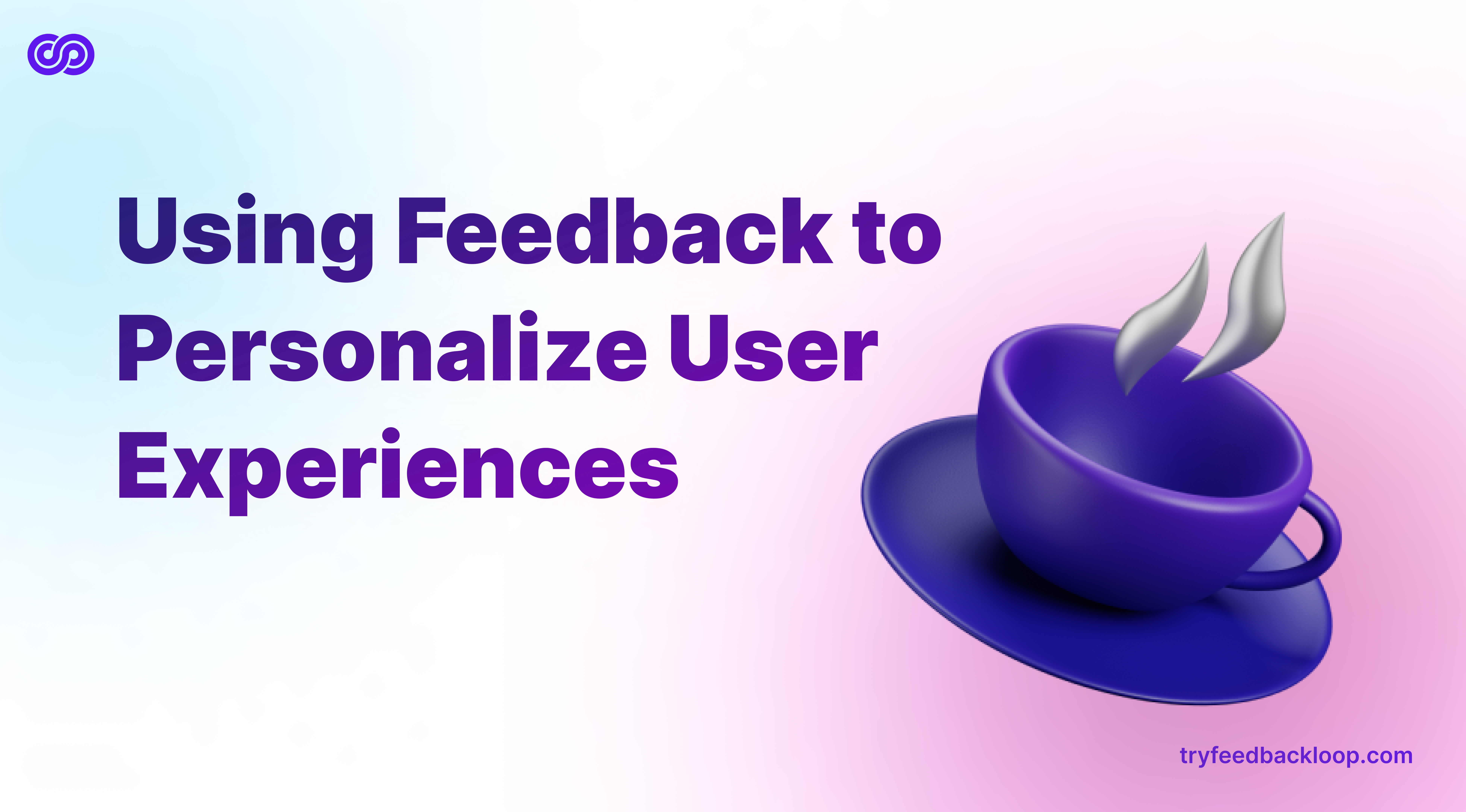
Using Feedback to Personalize User Experiences
Hey, it's Mehdi, one of the founder of Feedbackloop !
I think that one of the most important use cases of Feedback is being able to personalize the user experience on your software, all users love nice experiences so let's dive into how you can do that.
Understanding User Feedback
Feedback is more than just data; it's a treasure trove of insights into what your users want and need. At Feedbackloop, we categorize feedback into feature requests, bug reports, general feedback, and upvotes. Each type of feedback provides a unique perspective on your product's strengths and areas for improvement.
- Feature requests reveal what functionalities your users crave.
- Bug reports highlight pain points that need immediate attention.
- General feedback offers a broad view of user satisfaction.
- Upvotes indicate popular opinions and preferences.
By collecting and categorizing this feedback effectively, you can gain a comprehensive understanding of your users.
Analyzing Feedback for Personalization
Once you've gathered feedback, the next step is to analyze it. This involves looking for patterns and trends that reveal user preferences. Tools like sentiment analysis can help gauge user feelings towards specific features or aspects of your product. Additionally, identifying frequently mentioned issues or requests can guide your development priorities.
Consider a scenario where multiple users request a feature that enhances collaboration within your app. By analyzing this feedback, you can prioritize developing this feature, knowing it will significantly impact user satisfaction. At Feedbackloop, we often see clients who succeed in personalizing their user experience by honing in on such detailed insights.
Implementing Personalization Based on Feedback
Personalizing user experiences starts with implementing features that your users have specifically requested. This shows that you value their input and are committed to meeting their needs. Tailoring user interfaces and experiences based on feedback can also make your product more intuitive and enjoyable to use.
For instance, suppose users frequently mention the need for a dark mode to reduce eye strain during nighttime use. By adding this feature, you cater to a specific user preference, making your product more user-friendly. Feedbackloop's public roadmap feature makes it easy to track these requests and demonstrate your responsiveness to user needs.
Communicating Changes to Users
Closing the feedback loop is crucial. Users want to know that their voices have been heard and that their feedback has led to tangible improvements. Effective communication strategies include regular updates, announcements, and personalized messages to inform users about changes based on their feedback.
Our public roadmap is an excellent tool for maintaining transparency. It allows users to see which features are being developed and which bugs are being fixed, fostering a sense of involvement and trust. By keeping users in the loop, you not only show appreciation for their input but also encourage ongoing engagement and feedback.
Measuring the Impact of Personalization
To ensure your personalization efforts are successful, it's essential to measure their impact. Key metrics include user engagement, retention rates, and satisfaction scores. Tools like Google Analytics and in-app surveys can help track these metrics.
At Feedbackloop, we recommend a continuous feedback collection approach. This allows you to keep refining and improving personalization strategies based on new insights. Regularly measuring the impact of these changes helps you stay aligned with user needs and preferences.
Best Practices for Using Feedback to Drive Personalization
Engaging users in the feedback process is the first step towards successful personalization. Encourage users to share their thoughts and make it easy for them to provide feedback. Regularly updating your personalization strategies based on new feedback ensures that your product evolves with user expectations.
Leveraging community features in Feedbackloop can also foster a culture of continuous improvement. By creating a space where users feel heard and valued, you can build a loyal user base that actively contributes to the growth and success of your product.
Conclusion
And there we go, thanks for reading this little article, you can get a 7 days free trial on feedbackloop to start building better features for your software !